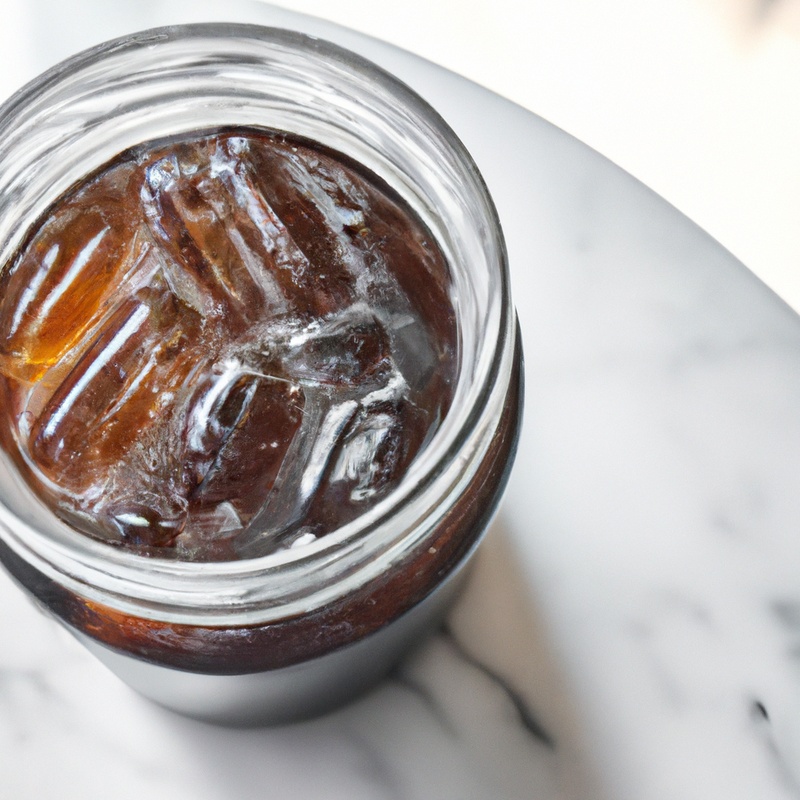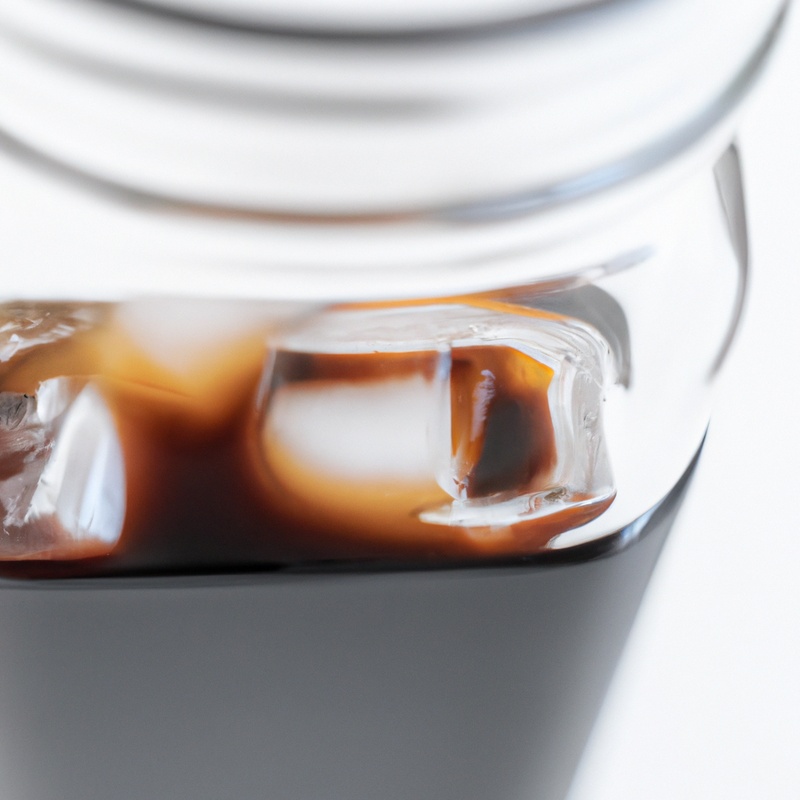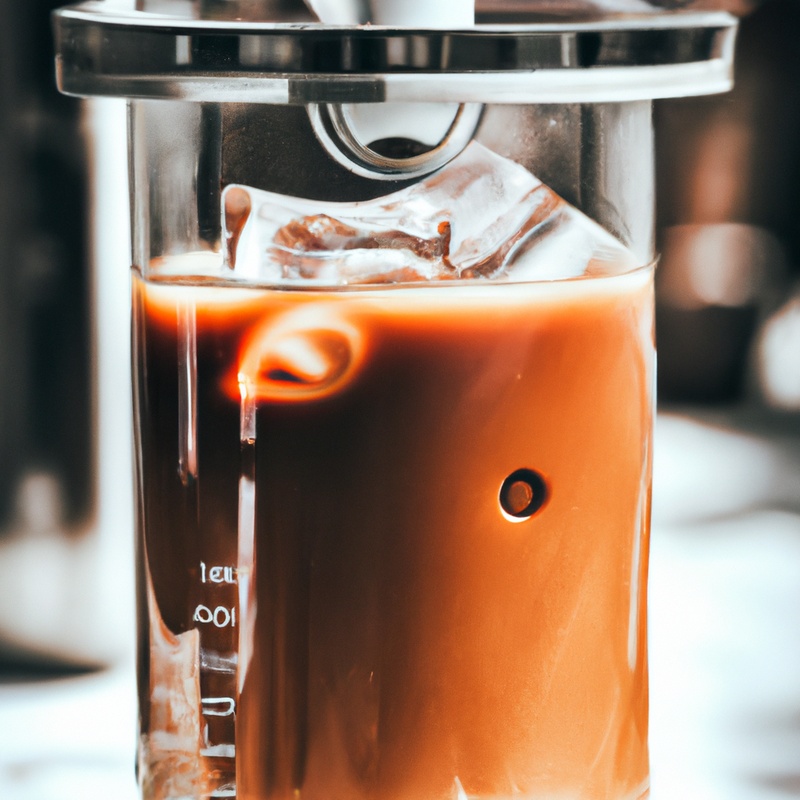Key Takeaways:
- Use a fine mesh strainer or cheesecloth to remove larger coffee grounds from your cold brew.
- For extra smoothness, run your cold brew through a paper filter or use a French press to remove any remaining sediment.
- Letting your cold brew sit in the refrigerator for at least 12 hours helps separate the coffee grounds, making it easier to filter.
- Experiment with different filtration methods and ratios to find the best balance of flavor and clarity for your cold brew.
Are you a coffee lover searching for the perfect cup of cold brew? Look no further! Filtering your cold brew coffee is the key to achieving a smooth and flavorful beverage that will leave you craving for more.
In this article, we’ll explore the basics of cold brew coffee, why filtering is essential, and different methods to filter your brew.
We’ll also provide you with a step-by-step guide on filtering your cold brew coffee to ensure you get the best results every time. So grab your coffee beans and let’s get filtering!
| Method | Pros | Cons |
| Milk Bag | – Easy to use and inexpensive | – Can result in sediment at the bottom |
| French Press | – Allows for full immersion and easy filtration | – Requires a separate French press or additional equipment |
| Coffee Sock | – Provides clear and smooth coffee | – May take longer to filter |
| Paper Filter | – Gives a clean and sediment-free brew | – Requires additional equipment and can be wasteful |
The Basics of Cold Brew Coffee
Cold brew coffee is a method of brewing coffee using cold water and a longer steeping time. It offers a smooth and less acidic flavor profile compared to traditional hot brewed coffee.
What is Cold Brew Coffee?
Cold brew coffee is a method of coffee preparation that involves steeping coffee grounds in cold water for an extended period, usually around 12 to 24 hours.
This slow process allows the coffee to extract flavors without the use of heat.
The resulting coffee concentrate is smooth, less acidic, and has a richer flavor compared to traditional hot brewed coffee.
To enjoy cold brew, it is typically diluted with water or milk and served over ice.

Why Choose Cold Brew Coffee?
Cold brew coffee has become increasingly popular for several reasons. Firstly, it offers a smoother and less acidic taste compared to traditional hot brew methods.
This makes it easier on your stomach and teeth.
Secondly, the brewing process extract less bitterness, resulting in a sweeter and more flavorful cup of coffee. Additionally, it can be enjoyed hot or cold, providing versatility all year round.
Lastly, it has a longer shelf life, allowing you to prepare a batch and store it in the refrigerator for up to two weeks.
So, if you’re looking for a delicious and refreshing coffee experience, cold brew is definitely worth a try!
Why Filter Cold Brew Coffee?
Filtering cold brew coffee is essential to remove any impurities and achieve a smooth, clean taste.
Benefits of Filtering Cold Brew Coffee
Filtering cold brew coffee offers several benefits.
- Smooth and clean taste: Filtering helps remove sediment and oils, resulting in a cleaner and less bitter cup of coffee.
- Improved clarity: Filtering removes any particles or residue, giving your cold brew a clear and visually appealing appearance.
- Longer shelf life: By removing impurities, filtering can extend the shelf life of your cold brew, allowing you to enjoy it for longer without any change in taste or quality.
- Easy to drink: With the removal of sediments, your cold brew becomes easier to consume without any grainy or gritty texture.
- Versatility: Filtered cold brew can be used as a base for a variety of drinks and recipes, allowing you to explore different flavors and options.
In short, filtering your cold brew coffee enhances its taste, appearance, shelf life, and overall enjoyment.
Common Impurities in Cold Brew Coffee
Common impurities in cold brew coffee include coffee grounds, sediments, and oils.
These impurities can negatively affect the taste and texture of your drink.
To avoid these impurities, you can use a fine mesh filter, paper filter, or a cold brew coffee maker with built-in filters.
Filtering your cold brew coffee will ensure a smoother and cleaner cup of joe.
Different Filtering Methods for Cold Brew Coffee
To filter your cold brew coffee, you can try using paper filters, metal filters, or cheesecloth bags for effective results.
Paper Filters
Paper filters are a popular choice for filtering cold brew coffee.
They are affordable, widely available, and easy to use.
The paper filters effectively remove sediment and oils, resulting in a smoother and cleaner cup of coffee.
To use a paper filter, simply place it in your brewing vessel and pour the coffee through it.
Make sure to choose filters specifically designed for cold brew to ensure optimal filtration.
After brewing, simply discard the used filter and enjoy your delicious cold brew coffee.

Metal Filters
Metal filters are a popular choice for filtering cold brew coffee. They are typically made from stainless steel and have a mesh-like design.
The small holes in the filter allow for the extraction of flavor from the coffee grounds while still preventing any sediment from entering the final brew.
Metal filters are durable, reusable, and easy to clean, making them a convenient option for avid cold brew enthusiasts. Just ensure that the filter is properly fitted to your brewing vessel to avoid any leakage or grounds escaping into your coffee.

Cheesecloth or Muslin Bags
When it comes to choosing between cheesecloth or muslin bags for filtering cold brew coffee, both options have their pros and cons.
Cheesecloth is a loose-woven fabric that allows for better filtration, resulting in a smoother coffee with fewer grounds.
On the other hand, muslin bags are more convenient and easy to use, as they eliminate the need for straining.
However, muslin bags may not capture all the finer coffee particles, leading to a slightly cloudier brew.
Ultimately, the choice between cheesecloth or muslin bags depends on personal preference and the desired level of clarity in your cold brew coffee.
Step-by-Step Guide on Filtering Cold Brew Coffee
Filtering cold brew coffee is an essential step to achieve a smooth and clean flavor. Let’s dive into a step-by-step guide on how to filter your cold brew coffee.
Step 1: Brewing Cold Brew Coffee
To brew cold brew coffee, you’ll need a few basic supplies: coarse coffee grounds, cold water, a large container, and a filter.
Start by combining the coffee grounds and water in the container, using a ratio of 1 part coffee to 4 parts water.
Stir gently to ensure all the grounds are fully saturated.
Cover the container and let it steep at room temperature for 12 to 24 hours.
Once steeped, strain the liquid through a filter to remove the grounds.
Voila! You’ve successfully brewed cold brew coffee.
Step 2: Choosing the Right Filter
To choose the right filter for your cold brew coffee, consider these factors:
- Material: Look for filters made of stainless steel, nylon, or paper. Stainless steel and nylon are reusable options, while paper filters are disposable.
- Size: Ensure that the filter fits the container or pitcher you will be using for brewing. Check the filter dimensions to find the appropriate size.
- Mesh Size: Consider the mesh size of the filter. A finer mesh will remove more sediment, resulting in a cleaner brew, while a coarser mesh may allow more oils and flavor compounds to pass through, creating a bolder taste.
- Easy to Clean: If you opt for a reusable filter, choose one that is easy to clean. Look for filters that are dishwasher-safe or can be quickly rinsed.
By considering these factors, you can select the right filter to achieve the desired taste and clarity in your cold brew coffee.
Step 3: Preparing the Filter
To prepare the filter for your cold brew coffee, start by selecting the appropriate size and type of filter. You can use a mesh filter, a paper filter, or even a cheesecloth, depending on your preference.
After choosing the filter, rinse it with water to remove any impurities.
Then, place the filter in your brewing vessel or directly over your serving container. Make sure the filter is securely in place and ready to strain the coffee grounds.
Step 4: Filtering the Cold Brew Coffee
To filter your cold brew coffee, you’ll need a fine mesh strainer or a cheesecloth.
Set the strainer or cloth over a clean container like a jar or pitcher.
Carefully pour the cold brew coffee through the strainer or cloth, allowing it to strain into the container.
The strainer or cloth will catch any coffee grounds, leaving you with a smooth and pure cold brew.
Give it a gentle stir and then refrigerate or serve over ice.
Enjoy your filtered cold brew coffee!
Tips for Optimal Cold Brew Coffee Filtration
To achieve optimal cold brew coffee filtration, consider the grind size, filter cleanliness, and patience.
Grind Size Matters
Grind size plays a significant role in the quality of your cold brew coffee. A coarse grind is ideal as it allows for a slower extraction and prevents over-extraction, resulting in a smoother and less bitter cup of coffee.
On the other hand, a finer grind can lead to a stronger and more intense flavor, but it may also result in a cloudy brew and sediment at the bottom of your cup.
Experiment with different grind sizes to find your preferred balance of flavor and clarity.
Filter Cleanliness and Maintenance
Filter cleanliness and maintenance are essential for ensuring the quality of your cold brew coffee.
Regularly clean your filter with warm water and mild dish soap to remove any coffee residue.
Rinse thoroughly to eliminate any soap residue.
After cleaning, allow the filter to air dry completely before using it again.
Additionally, inspect the filter for any signs of wear or damage and replace it if necessary.
Taking these steps will help maintain the effectiveness of your filter and prevent any unwanted flavors from seeping into your cold brew coffee.
Patience is Key
Patience is key when it comes to filtering cold brew coffee.
It’s a slow process that requires time and patience to achieve the best results.
Rushing the filtration can result in a gritty texture and a less flavorful brew.
Here are some tips to keep in mind:
- Let gravity do its work: Instead of rushing the filtration process, allow gravity to slowly pull the coffee through the filter. This will help ensure a smoother and cleaner brew.
- Don’t disturb the grounds: Avoid stirring or agitating the coffee grounds during filtration. This can disrupt the extraction process and create a muddier brew.
- Give it time: Cold brew coffee takes time to fully filter. Depending on the batch size and the filter you’re using, it can take anywhere from 8 to 24 hours. Be patient and resist the temptation to speed up the process.
Remember, the key to a great cold brew is allowing the coffee to slowly extract and filter.
Patience will be rewarded with a smooth, flavorful, and enjoyable cup of cold brew coffee.
Frequently Asked Questions
Can I reuse the filters?
Yes, you can reuse the filters for your cold brew coffee. However, it’s important to note that the effectiveness of the filter may diminish over time.
If you choose to reuse the filters, make sure to thoroughly clean them after each use to remove any coffee residue.
Additionally, keep an eye out for signs of wear and tear, such as holes or tears, as this can affect the quality of your coffee.
How often should I change the filter?
The frequency of filter changes depends on the type of filter you are using. If you have a reusable filter made of metal or cloth, you can simply wash it after each use.
However, if you are using paper filters, it is recommended to change them every time you brew a new batch of cold brew coffee.
This ensures that your coffee is fresh and free from any residual flavors or sediments. Regularly changing your filter will help maintain the quality and taste of your cold brew coffee.
Can I use a French press for filtering cold brew coffee?
Yes, you can definitely use a French press for filtering cold brew coffee. In fact, a French press can be a great tool for this.
The mesh filter in a French press is designed to remove larger particles, resulting in a smooth and clean brew.
Simply add your cold brew concentrate to the French press, press down the plunger slowly, and you’re good to go. Enjoy your delicious cold brew coffee!
Final Verdict
Filtering cold brew coffee is essential to enjoy a smooth and sediment-free cup of coffee.
By removing impurities, you enhance the flavor and quality of your brew.
Paper filters, metal filters, and cheesecloth or muslin bags are the common filtering methods to choose from.
To optimize the filtration process, consider factors such as grind size, filter cleanliness, and patience.
Remember to clean and maintain your filters regularly for the best results.
By following these steps and tips, you can ensure a delicious and clean cup of cold brew coffee every time.
Happy brewing!
